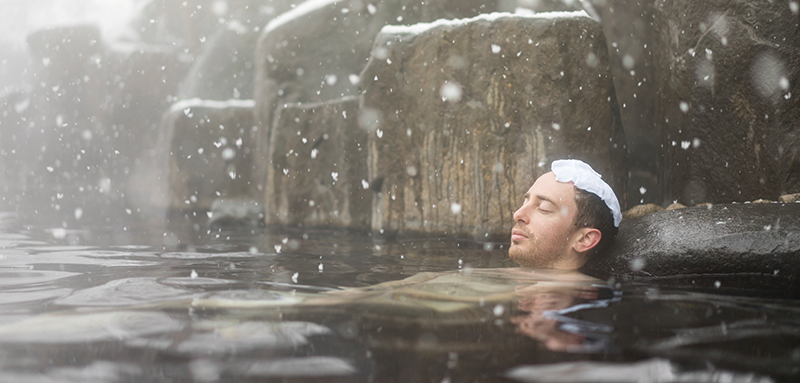Where Vacant Houses and Former Schools Are Transformed into Art and Accommodation
Discover unique art-and-accommodation experiences in Echigo-Tsumari, where vacant houses and former schools transform into lodgings. From James Turrell’s meditative House of Light to a sculpted traditional home and an old school-turned-inn, these spaces blend local culture, architecture, and art, offering immersive encounters with nature, light, and the region’s community warmth.
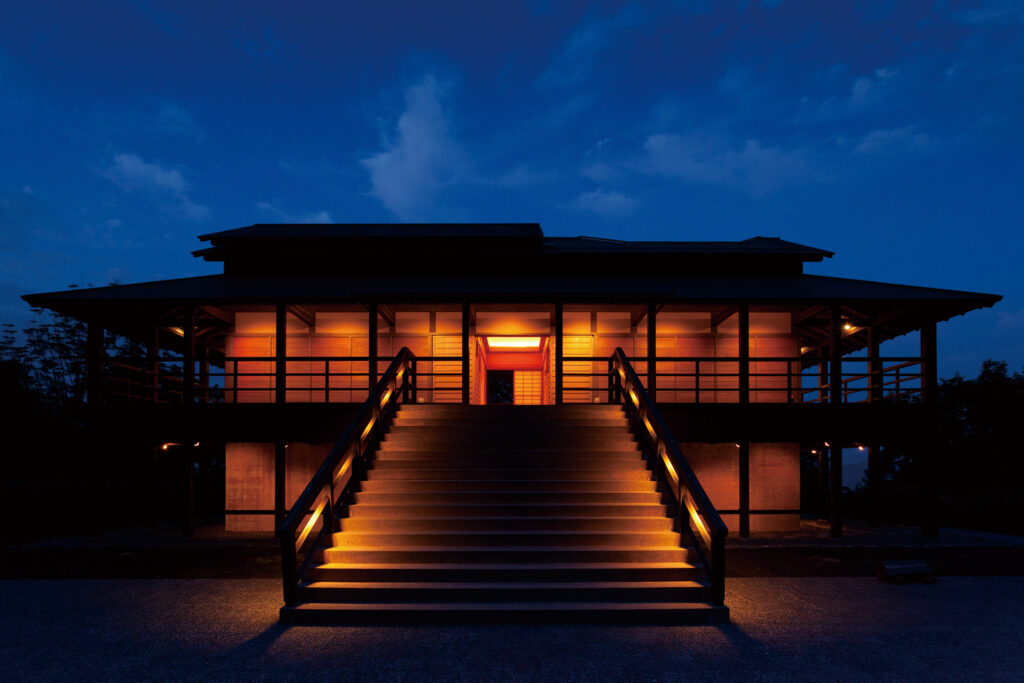
House of Light
[Tokamachi City]
James Turrell
Photo by Yamada Tsutomu
American artist James Turrell created the “House of Light” after receiving a request from the festival’s general director, Fram Kitagawa, to build a “house of meditation.” The inspiration came from the book In Praise of Shadows by Jun’ichirō Tanizaki, which Mr. Kitagawa gave Turrell at that time.
In every corner of the House of Light, you can see the interplay of light and shadow. A sliding roof opens to reveal the sky in the “Outside In” room, and in the “Garden Room,” the interior gradually merges with the outdoors to create the illusion of being in a forest. At night, fiber-optic lights illuminate the water in the bath so that, when you immerse yourself, you can actually “touch” the light. Turrell’s idea that “beauty does not reside in objects themselves, but in the interplay of shadow and light” is something you can experience here. We encourage you to devote some time to “meditation” in this space, where day and night, East and West, and tradition and modernity coexist and blend together.
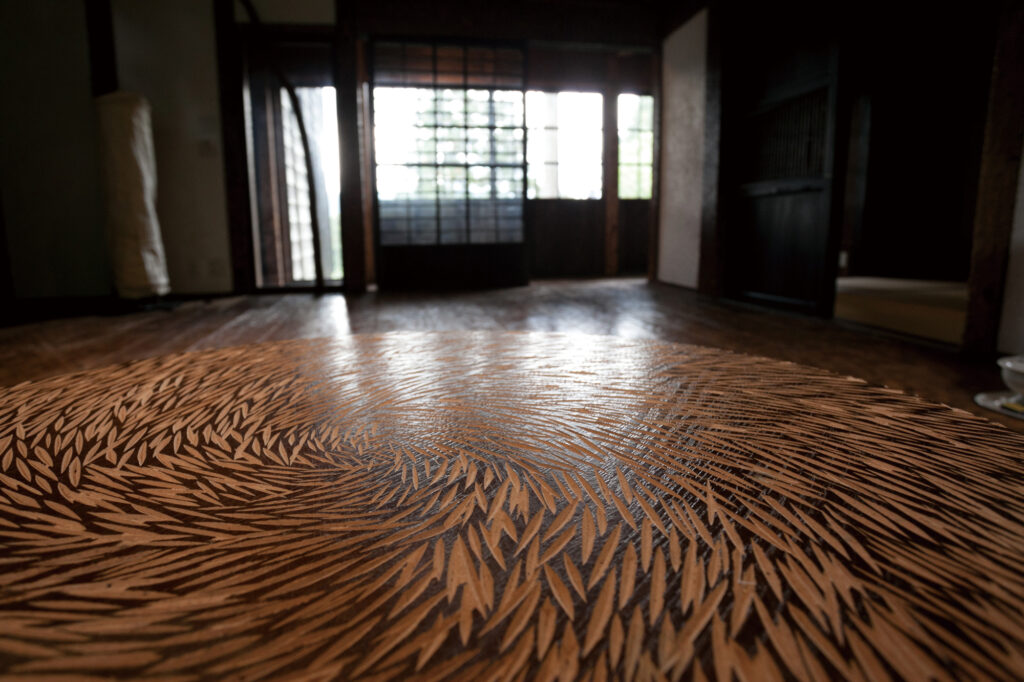
The House That Sheds Its Skin
[Tokamachi City | Limited-Time Availability]
Junichi Kurakake + Volunteers from the Nihon University College of Art (Sculpture Course)
Photo by Yamada Tsutomu
Step inside and you’ll be overwhelmed by the chisel marks—on the floor, walls, ceiling, and beams—carved throughout every inch of the interior. Known as “The House That Sheds Its Skin,” it was created by sculptor Junichi Kurakake and volunteers from the Nihon University College of Art’s Sculpture Course. They carved out every part of this over-150-year-old wooden house in a heavy-snow region. It took about two and a half years from planning to completion, involving a total of around 3,000 participants.
Through the act of carving, an empty old house was brilliantly “reborn” as art. Lying down on the carved floor, you’ll feel an inexplicable warmth. Maybe it’s the heat of the creators’ hands or their passion coming through; either way, you may feel as if you’re being gently enveloped by the house itself. You’ll want to drift off to sleep, embraced by that tangible human touch.
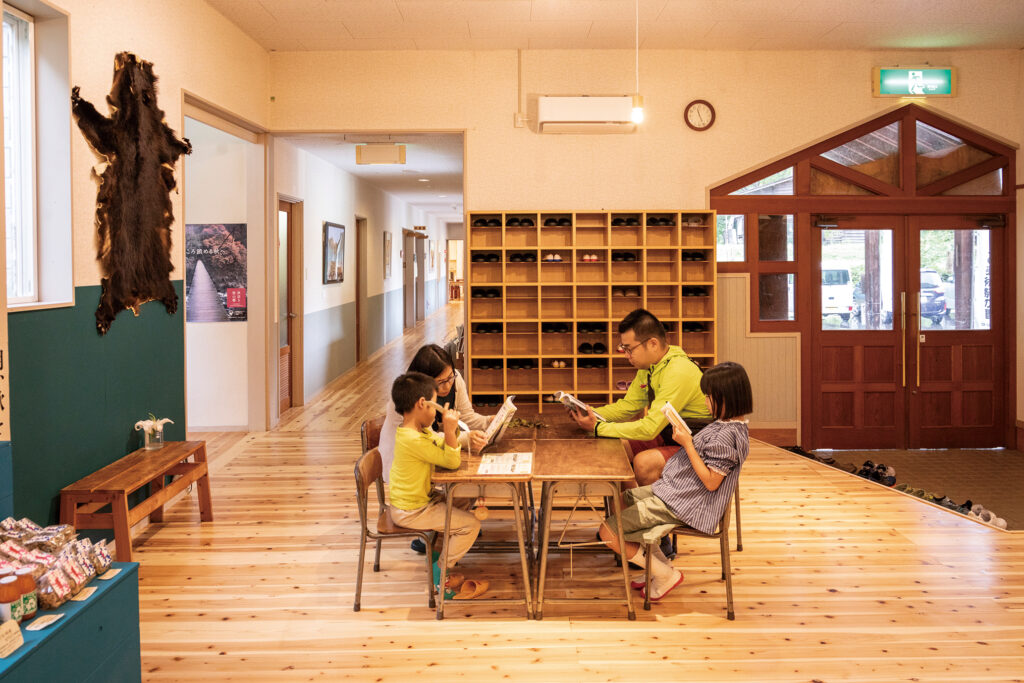
Akiyamago Miyato Onsen Katakuri-no-Yado
[Tsunan Town | Limited-Time Availability]
Photo by Nakamura Osamu
Located in the secluded region of Akiyamago, this inn occupies what was once an elementary school. Classrooms have been transformed into Japanese-style guest rooms, and the principal’s office is now a hot-spring bath. The gymnasium and schoolyard, which still retain the charm of the old school days, can be used for sports, study sessions, music events, and more. In the gym, you can also see Tsumaari Sugoroku, an artwork by Rintaro Hara + Yuu Hara featured in the festival. Meals prepared with local ingredients—rice, vegetables, mountain vegetables, and mushrooms—are a key attraction here.
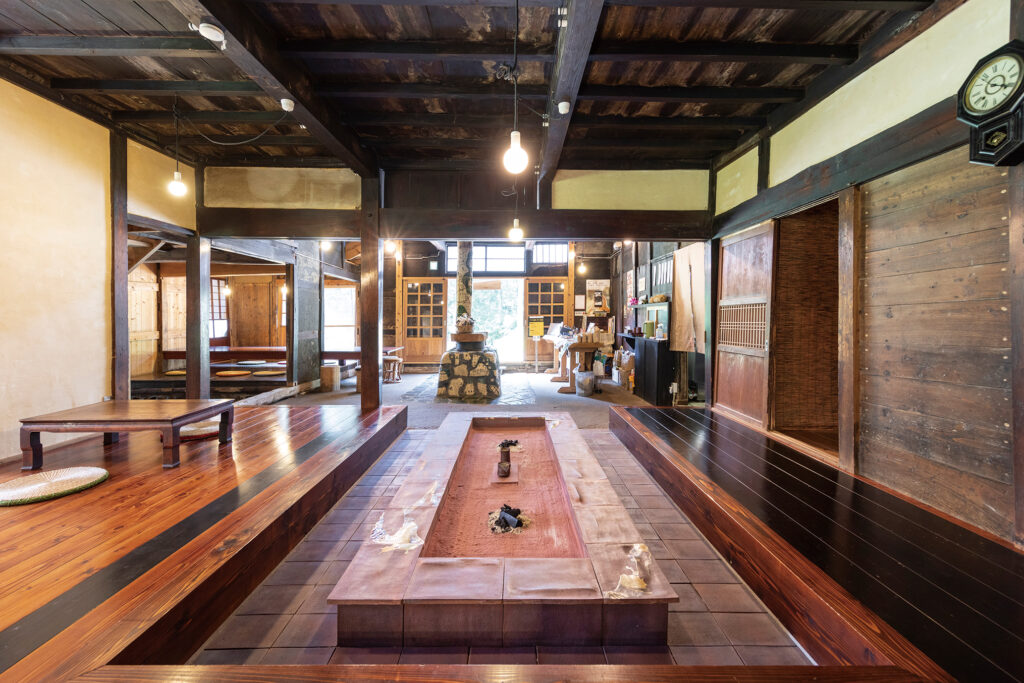
Ubusuna no Ie
[Tokamachi City | Limited-Time Availability]
Photo by Nakamura Osamu
Housed in a 100-year-old thatched-roof farmhouse, Ubusuna no Ie offers daily small side dishes made from locally grown vegetables by local mothers, plus a chef-supervised main dish. Built in 1924 in the distinctive Echigo “naka-mon” style, this house has been restored through ceramic art. On the first floor, you can see works by leading Japanese ceramic artists in the irori hearth, kamado stove, washbasin, and bathtub; and you can enjoy a meal served on ceramic tableware crafted by these artists. It’s both an artwork and a restaurant. On the second floor are three tea rooms that serve as an exhibition space for ceramic works. The warmth of the ceramics, the thatched-roof architecture, and the bright smiles and conversations of the local women will welcome you like family. Dining-only visits are also possible.
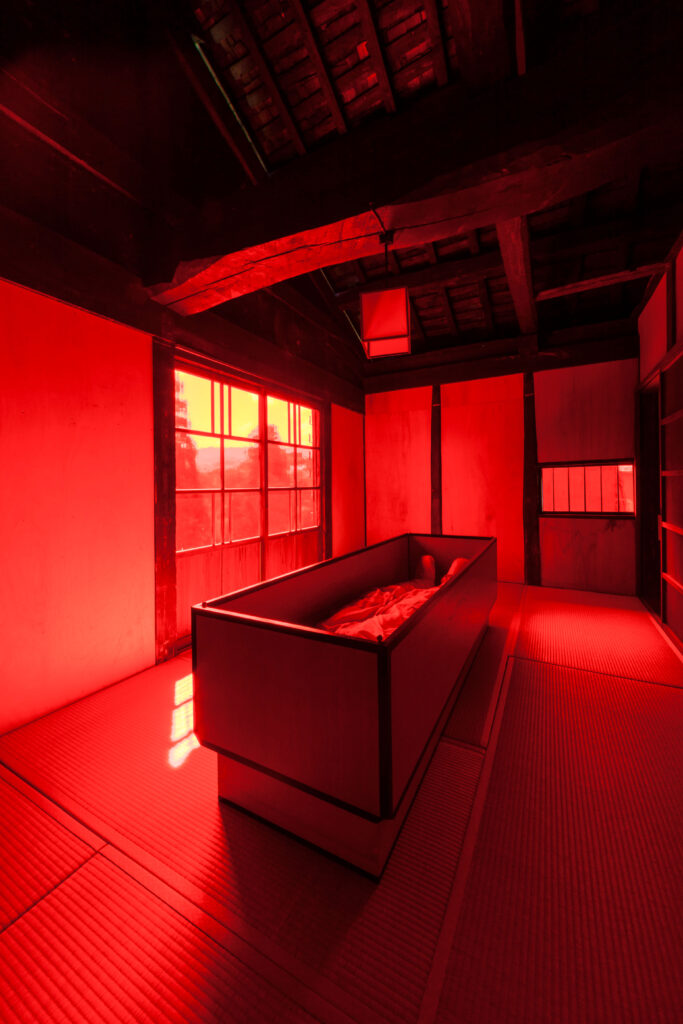
Dream House
[Tokamachi City | Limited-Time Availability]
Marina Abramović
Originally built more than 100 years ago, this house was renovated in 2000 as a work by Marina Abramović, an artist born in the former Yugoslavia. Inside the “Dream House,” there are four bedrooms—red, blue, purple, and green. You sleep in a suit matching the color of the room, on a “dream bed” with an obsidian pillow, to experience the natural energy emitted by minerals and (perhaps) dream in that color. In the morning, you record your dream in the “Dream Book,” becoming part of the “Dream House” project. The act of sleeping itself becomes art.
Important Note
Accommodation is available only during specific periods. Please contact the Art Triennale Information Center for details.
Echigo-Tsumari Art Field General Information Center
Niigata Prefecture Tokamachi City, Honcho 6-1, 71-2
Echigo-Tsumari Satoyama Contemporary Museum MonET


-1024x626-2.jpg)
